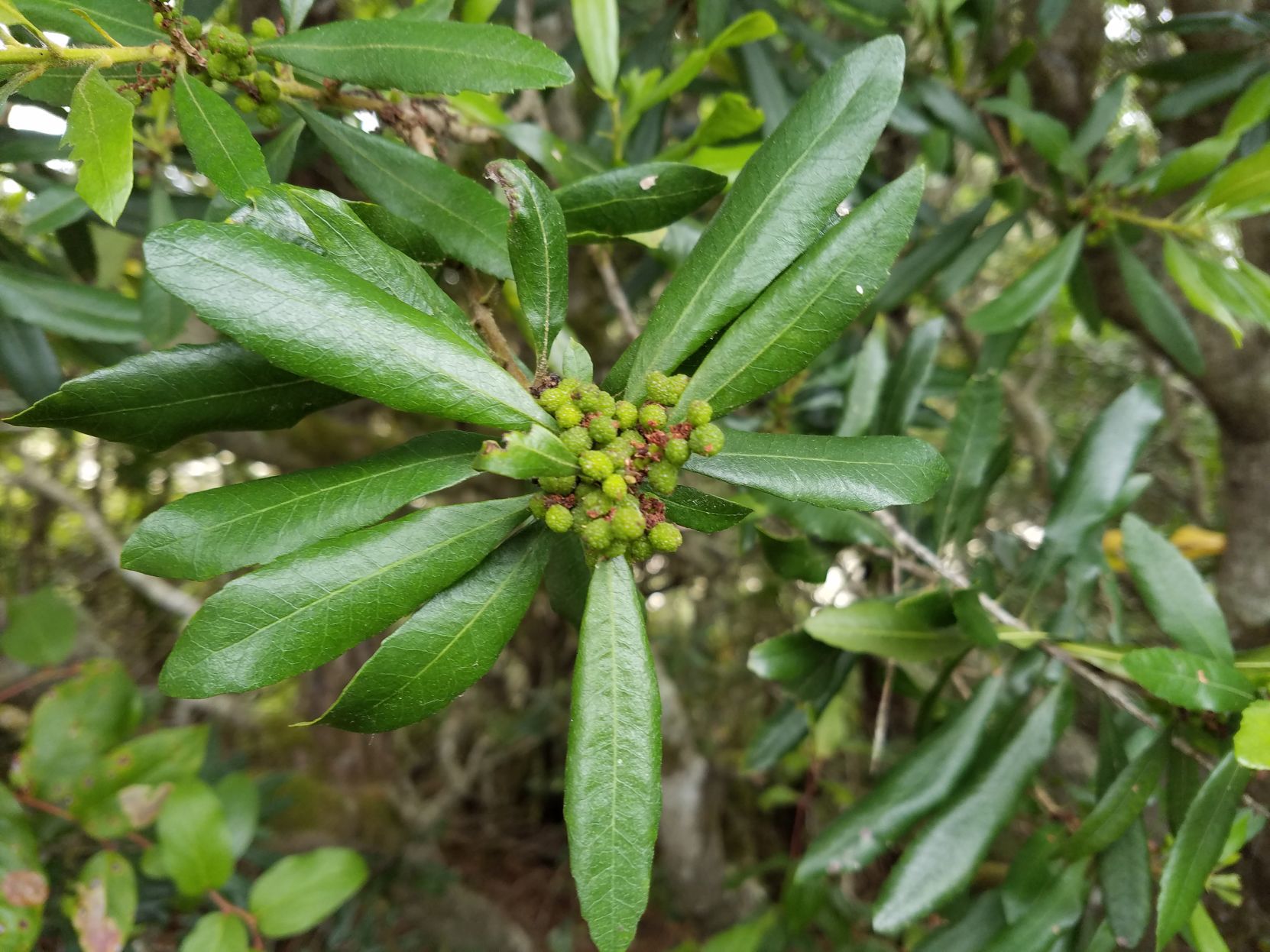

Plants may be pruned (limbed up) to form an attractive small tree with a handsome gray, almost white bark.Ĭommon waxmyrtle is sensitive to cold. They do not require a lot of maintenance.

#Wax myrtle oregon full#
Waxmyrtles are not particular about soil, but they prefer good drainage and slightly acidic soils.Ĭommon waxmyrtle should be planted in partial shade to full sun. Waxmyrtles make good beach plants, since they tolerate drought, sand, sun and salt spray. The waxy berries were used for making candles in Colonial times. Birds are attracted to wax myrtles, which they use for food and shelter. The foliage and berries are pleasantly aromatic. Wax myrtles are useful as screen plants, informal hedges, or roadside plantings. Landscape UseĬommon waxmyrtle ( Morella cerifera) growing as a hedge in a beach community. Growth RateĬommon waxmyrtle grows very fast, sometimes as much as 5 feet in height and width in a single growing season. Waxmyrtle plants are either male or female. The grayish-white fruits are small (⅛ inch wide), heavily coated with wax and massed in clusters on the stems of the previous season’s growth. Inconspicuous flowers appear in early spring, followed by fruit in late summer through winter. The leaves are glossy green and typically 1½ to 3 inches long and ⅓ to ¾ inches wide, sometimes bigger (4½ inches long and 2 inches wide). This broadleaf evergreen shrub or tree grows quickly to 15 to 20 feet high and wide. Its range is from New Jersey to Florida and westward to Texas. Photo by Karen Russ, ©2007 HGIC, Clemson ExtensionĬommon waxmyrtle or Southern bayberry ( Morella cerifera formerly Myrica cerifera) is native to South Carolina and other southeastern States. Waxy gray berries of common waxmyrtle ( Morella cerifera).


 0 kommentar(er)
0 kommentar(er)
